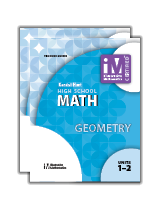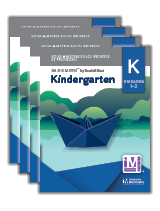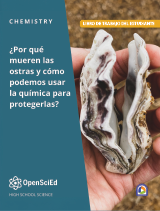Search Listing Name
product:
OpenSciEd Unit 6.1: Light & Matter Spanish Student Edition
OpenSciEd Middle School science program addresses all middle school NGSS standards. This comprehensive science curriculum empowers students to question, design, investigate, and solve the world around them.
- Phenomenon Based - Centered around exploring phenomena or solving problems
- Driven by Student Questions - Storyline based on students’ questions and ideas
- Grounded in Evidence - Incremental building and revision of ideas based on evidence
- Collaborative - class and teacher figure

product:
Illustrative Mathematics: Geometry Student Edition Set
IM Geometry is problem-based core curriculum rooted in content and practice standards to foster learning and achievement for all. Students learn by doing math, solving problems in mathematical and real-world contexts, and constructing arguments using precise language. Teachers can shift their instruction and facilitate student learning with high-leverage routines that guide them in understanding and making connections between concepts and procedures.

product:
Illustrative Mathematics: Kindergarten Spanish Teacher Resource Copy Master Set
Illustrative Mathematics K-5 MathTM is an IM Certified product providing trusted, highly rated materials to ensure students thrive in mathematics. Each Illustrative Mathematics lesson has four phases, from pre-unit practice modules to cool downs, focusing students’ attention on definitions, notations, and graphical conventions contributing to the development of real numbers.
The big ideas in kindergarten include: representing and comparing whole numbers, initially with sets of objects; understanding and applying addition and subtraction; and describing shapes

product:
OpenSciEd Unit 6.4: Plate Tectonics & Rock Cycling Student Workbook
OpenSciEd Middle School science program addresses all middle school NGSS standards. This comprehensive science curriculum empowers students to question, design, investigate, and solve the world around them.
- Phenomenon Based - Centered around exploring phenomena or solving problems
- Driven by Student Questions - Storyline based on students’ questions and ideas
- Grounded in Evidence - Incremental building and revision of ideas based on evidence
- Collaborative - class and teacher figure
product:
OpenSciEd Chemistry + Earth & Space Unit 1: Thermodynamics in Earth Systems Spanish Student Edition
OpenSciEd High School addresses all high school NGSS standards. This comprehensive science curriculum empowers students to question, design, investigate, and solve the world around them.
- Phenomenon Based - Centered around exploring phenomena or solving problems
- Driven by Student Questions - Storyline based on students’ questions and ideas
- Grounded in Evidence - Incremental building and revision of ideas based on evidence
- Collaborative - class and teacher figure out ideas together



